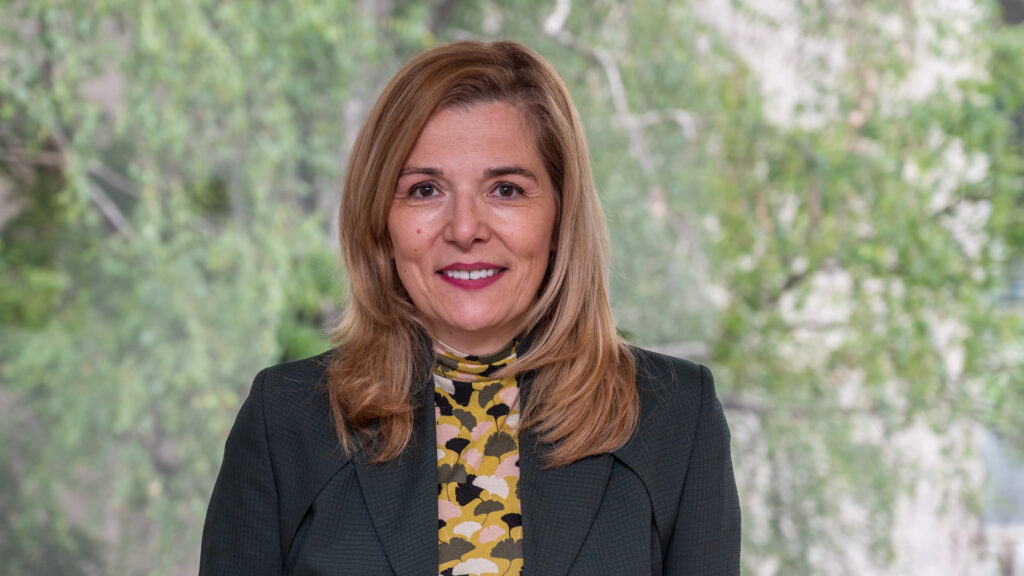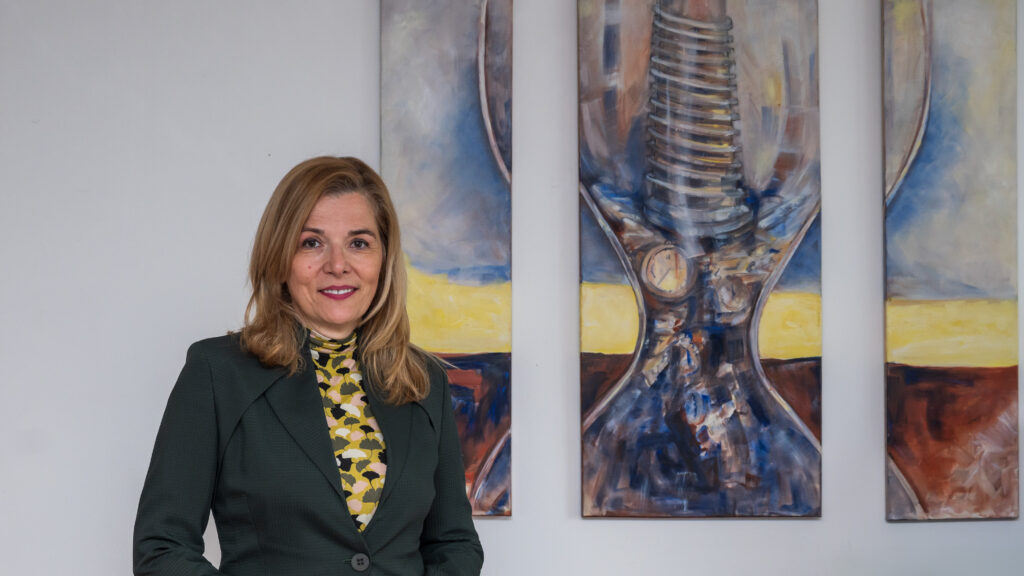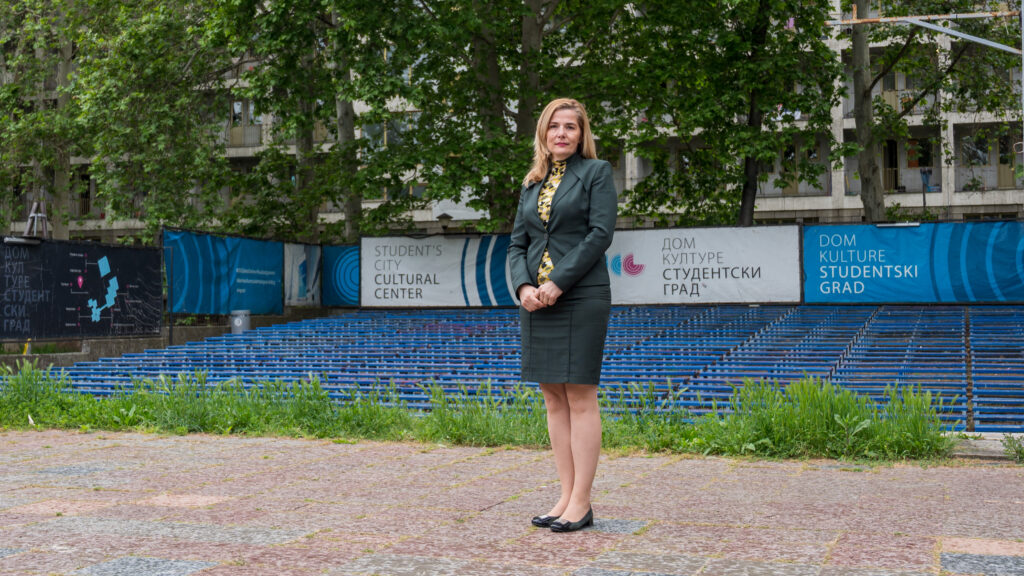On how student spaces become cultural engines, and why creativity still needs a place to grow
 Dr Dubravka Tomić, Acting Director of the Students City Cultural Centre (DKSG) in Belgrade, discusses the Centre’s evolving mission, the cultural pulse of new generations, and the quiet power of spaces that nurture art and community.
Dr Dubravka Tomić, Acting Director of the Students City Cultural Centre (DKSG) in Belgrade, discusses the Centre’s evolving mission, the cultural pulse of new generations, and the quiet power of spaces that nurture art and community.
Since its founding, DKSG has had a unique influence on students’ cultural lives. How do you perceive the significance of this institution today and its position on Belgrade’s cultural map?
Cultural centres were established in both urban and rural areas after the Second World War. Unlike those centres, which typically fall under the remit of local governments, DKSG, along with four similar institutions, operates under the Ministry of Education. This affiliation reflects our role in youth development, serving both an educational and a formative function.
DKSG is part of the broader support framework for students at the University of Belgrade and the University of Arts in Belgrade. Our institution aims to support emerging authors and offer them a first platform to present their knowledge and creative work. Many of those who go on to shape the cultural landscape of Belgrade – and indeed Serbia – take their first steps here. I say Serbia because our students do not come solely from Belgrade; they often return to their hometowns and continue cultivating their local cultural environments.
In addition to supporting young artists, we are also building audiences, allowing students to experience theatre, film or exhibitions, which for some may be their very first encounter with such content.
As someone leading a cultural institution primarily dedicated to students, how would you describe today’s generation? What fuels them, what do they fight for, and what moves them?
Like all those before it (and, I believe, those still to come), today’s generation of students strongly needs to channel youthful energy into expression and meaningful change. This is a well-known part of growing up—a vital maturing process, without which no society can progress or develop.
We often hear claims that students are disinterested or detached, mainly due to the rapid technological developments of the past decade. However, we are witnessing how they have managed to use these digital environments to access information, learn, and create at a much faster pace.
I believe what truly fuels them is that speed—the immediacy of access and response—yet, like generations before them, they are fighting to be acknowledged, to have their voices heard and respected.
Student protests have a long and vital tradition in Serbia. How do you view today’s youth rebellion and DKSG as spaces for expression through art, dialogue, and action?
Youth rebellion is a recurring historical theme, not just in our country, but also worldwide. Demonstrations and revolutions have often given rise to new artistic directions and forms. One of the most well-known examples, familiar to a broader audience and relevant to our region too, occurred during the Vietnam War protests, when young people, then known as hippies, gathered in Central Park and, in response to police intervention, stripped naked in protest. The musical Hair by Ragni and Rado emerged from that act, which went on to tour the world and remains on stage, generating vast revenue. Perhaps we, too, will be the ones to create a similarly impactful work within the realm of amateur art, just as Hair began.
It is natural to expect that artists will respond in their distinctive way to today’s protests, interpreting and expressing their views and experiences. Our region has had brilliant examples: one of the most endearing and enduring is Nušić, who captured the spirit of his time with wit and grace and whose work remains relevant without ever being offensive.
We will continue to approach our work without offence and remain open to dialogue among all student groups, embracing different perspectives on the protests. At the same time, our mission is not solely to reflect this theme—our primary role is to support the education of young people in the arts. That includes helping them understand the artistic responses to such events and the broader context in which they are created.
Perhaps not an excess of anything, but a bit of everything
Gen Z is often described as digital, politically aware, and disillusioned. Do you observe any specific patterns in how young people today engage with culture, and what does that say about our society?
I believe all generations of young people are fundamentally similar, and every society is somewhat inadequate for its youth. Perhaps it is precisely this youthful rebellion and energy that propels society forward. Every generation can find countless examples of dissatisfaction among young people. What sets this generation apart is the influence of digitalisation and a greater sense of detachment from one another. Thanks to technological advances, cultural consumption has shifted towards digital media.
We must adapt to newer formats. Today’s audiences are quicker than just a decade ago and far more demanding regarding audiovisual content. They expect events to be faster-paced and more dynamic. Our society no longer allows for extended forms, yet at the same time, it is oversaturated with technology, which ultimately brings us back to the human element.
The modern individual has become a critic, unwilling to accept art for art’s sake. They want to understand it, and they expect it to be accessible. Today’s audience no longer conforms to elitist or conformist behaviours – attending events merely to be seen, without truly engaging with the work itself, is no longer the norm. The era of flaunting status or attire has passed. Contemporary audiences can access all content in digital formats and choose what to engage with based on their interests and needs.
 Which programmes, collaborations or projects have you been particularly proud of since taking over the leadership of DKSG?
Which programmes, collaborations or projects have you been particularly proud of since taking over the leadership of DKSG?
What I am most proud of is the trust placed in me to lead such an institution and the opportunity to work in a field I have studied and dedicated much of my life to. The Centre has signed a Protocol of Cooperation with the University of Belgrade and has opened its doors to all faculties. Numerous humanitarian initiatives have also been carried out.
I’m especially proud of Neil LaBute’s masterclass in February 2025, which brought together students from across the region. I would also highlight the major project, They Live, initiated during my predecessor’s term and brought to life by the Visual Arts Department under Maida Gruden’s editorial guidance.
DKSG is known for its multidisciplinary approach, which includes film screenings, panel discussions, concerts, workshops, and exhibitions. How do you plan to further develop this concept?
This has largely been the model on which DKSG has operated over the past fifty years. I should also note that the institution features a library and reading rooms, which provide daily support to students in their studies and research. We will continue to develop within these areas while creating opportunities for other faculties to showcase their work. I am particularly referring to faculties engaged in multimedia, and we are proud to have established cooperation with the Secondary School of Graphics, which offers a programme in this field.
I also believe introducing a student editor role would be extremely valuable. In addition to gaining practical experience, students in this position could contribute to modernising the Centre’s work. For the older generation, the task is to act as mentors—to use our professional experience to support and guide young people.
We are located within the Studentski grad complex and organise several workshops for students. I plan to place a greater focus on amateur theatre and student music groups to enrich student life within the complex further.
How challenging is it to balance artistic ambition, institutional responsibility, and financial limitations without losing sight of the institution’s mission?
Our primary mission is to promote student work and the outcomes of their academic pursuits, thereby nurturing artistic ambition throughout their studies. Our institution is funded by the Ministry of Education, which provides an invaluable foundation for the long-term sustainability of an organisation like ours. This support enables us to offer faculty members space free of charge and to organise programmes and workshops for students.
Nearly all of our activities are free of charge, which, of course, limits the scope for implementing large-scale projects. It is certainly a challenge to maintain a 5,000-square-metre facility in a way that keeps it safe and comfortable for everyday use while also finding resources for entertainment programmes aimed at young people and the local New Belgrade community—and perhaps even for publishing the occasional book.
Still, despite how difficult it may sound, I strive to be a good host, in the spirit of our tradition – perhaps not having an excess of anything, but managing to offer a bit of everything.
In the end, we return to the human element
What would it be like if you had to choose one moment, encounter, or event at DKSG that best captured why you did this job?
The most meaningful moments are those in which you are there to support students in their work and education. Perhaps the most valuable aspect is that, beyond our regular programming, DKSG also hosts classes for students from Kosovska Mitrovica. During those times, the spaces are alive with new challenges – the hallways become scenes of creation and growth. You’re ready to offer them even your office if they need a space to rehearse.
There is a unique joy in providing two of the three essential elements of theatre: a place for something to happen and a loyal audience. The rest—developing their art and pushing creative boundaries—is up to them.
And then, at the end of the day, you leave the office tired, your mind full of contracts and invoices. But as you walk down the stairs, you hear music drifting from the dressing rooms – a young musician rehearsing for a concert. Students wave to you from the Bistro garden during their break. And just like that, you’re already looking forward to returning tomorrow.
